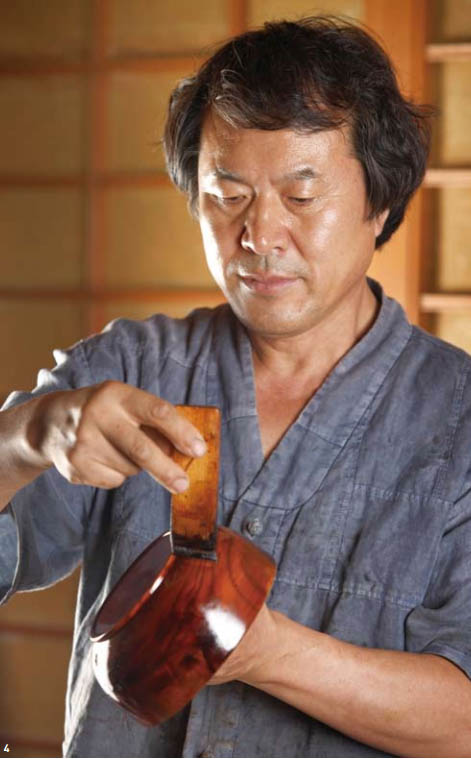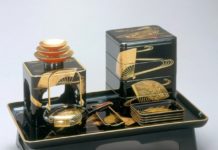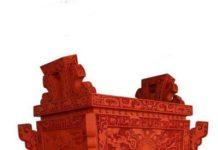
Lacquer is a distinctive Korean craft dating back 2,000 years. Traditionally, it is found in anbang and sarangbang (a main room and a reception room of a Korean traditional house).
Korean lacquer sap is considered to be the best quality in the world. It has a high proportion of urushiol, which activates the enzyme, resulting in quick hydration and hardening of lacquer layer. But the supply is limited and is thus expensive. Today, there is greater use of Chinese lacquer sap.
Lacquer is mostly applied to particular set of appropriate materials, including wood, bamboo, cloth, paper, clay, and metal. The raw lacquer is heated to 40C. Oxidised steel can be added to create a pitch black colour. The lacquer is mixed with fine earth, powdered shell and charcoal to enhance the smooth surface. The surface must first be polished with whetstone and then the lacquer applied in a series of layering, smoothing and drying. A brush is used (gwiyal) made from human and horse hair. The process is divided into three steps: chochil (first lacquering), jungchil (middle lacquering), and sangchil (final lacquering). Lacquering must be done at least 20 times. After the final coat, the object is vigorously polished.

Mother-of-Pearl design, 47 x 28 x 25cm
A popular motif for lacquerware included a scene with both the sun and moon, representing a coexistence of two opposing elements. In a similar vein, Korean lacquerware combines the radiance of the sea (mother-of-pearl) with the wisdom of the mountains (lacquer tree sap) to create an artistic as well as functional article.
Since the Goryeo Dynasty, mother-of-pearl has been introduced as a feature of lacquer in a technique known as najeon chilgi. This is commonly found on wooden furniture. This process involves an extra 25 steps and a basic item can take six months to complete. Hwang Sam-yong (Crosspoint Cultural Foundation) is a widely exhibited master of najeon chilgi, known for his Pebbles, which are large seats covered entirely in mother-of-pearl.
Hyeop-jeo-tae is a specialised technique which is applied to a fabric frame, creating an object that is almost entirely made of lacquer. 50-100 layers of hemp with lacquer are applied, with drying and polishing of each layer. A widely exhibited master of this technique is Hae-cho Chung, who studied chiljang at Hongik University and researched techniques in Vietnam and Japan.
Sohn Dae-Hyun was selected by his Master Min to carry on the tradition and in 1999 he was designated a Seoul Intangible Cultural Property. Lacquer (chiljang) in South Korea was designated as an Important Intangible Property in 2001. This support was given through the lacquer master Jeong Su-hwa. At the moment, lacquer produced in Wonju in Gangwondo province is particularly prominent.
Further reading
Frick, Patricia, and Soon-Chim Jung, eds. Korean Lacquer Art. Chicago, Ill: University of Chicago Press, 2013.
Hee, Lee Han. “Korean Lacquer Art Technique: Korean Lacquer Craft of Goryeo to Joseon Dynasties.” Journal of Chinese Lacquer 31, no. 3 (2012): 29–39.
Hyun-sook, Park. “Sohn Dae-Hyun: Applying Layer upon Layer of Lacquer for an Enduring Luster.” Koreana 23, no. 3 (2009): 46–51




